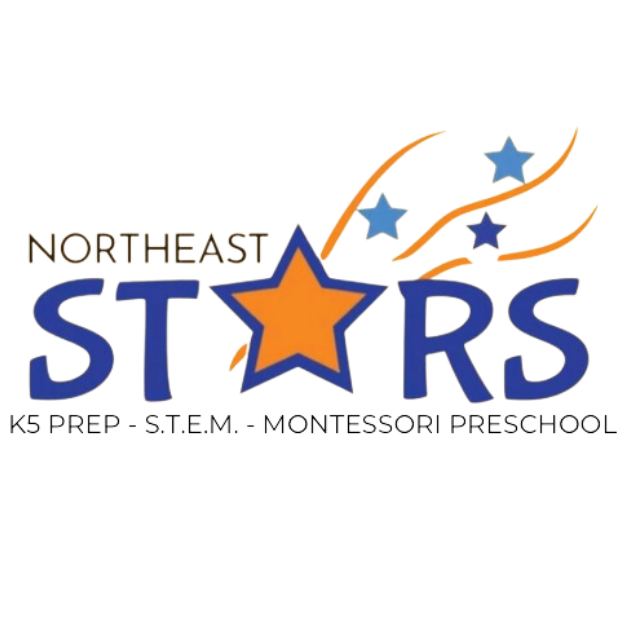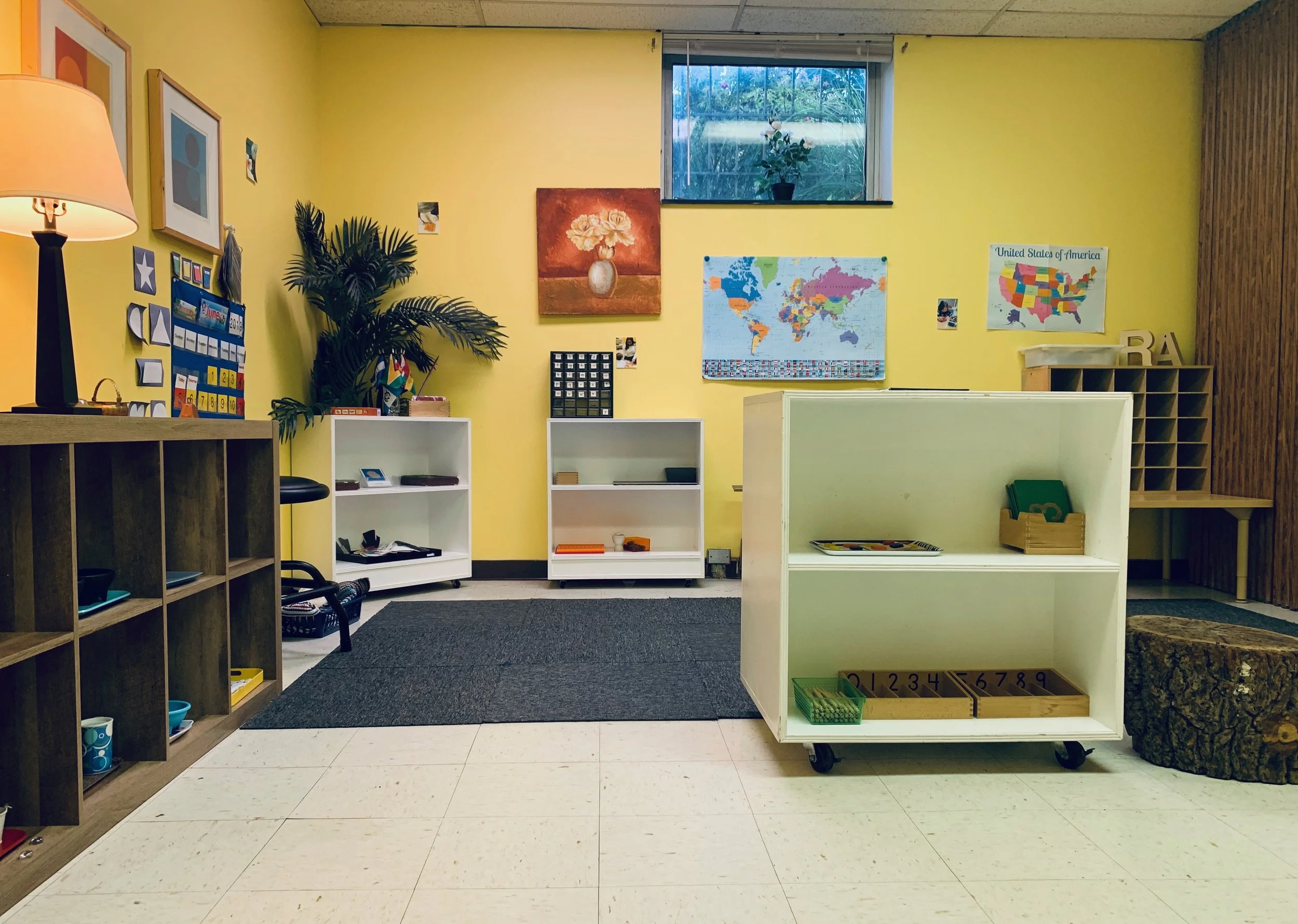At Northeast Stars, the Primary Classroom is a place of calm and order.
Our Primary Students are ages 36 months to 5 years.
Children thrive in our primary classroom because they experience learning through practical application. They work at their own pace in both a one-on-one and group learning environment with the guidance and encouragement of our teachers.
NES offers a STEM based education and kindergarten readiness based on a Montessori curriculum. We also integrate a composite curriculum from today's best educational practices and work with our families to integrate those practices in the home. This enables the children to function confidently and completely in the activities of their everyday life.
Children may choose to work alone or with a friend and are free to explore activities that interest them. Your child will benefit from engaging in activities that focus on key developmental areas including:
Practical life: The precise movements and sequences developed doing practical activities such as polishing, buttoning, bow tying, and lacing strengthen motor skills and concentration. Pouring, scooping and sorting activities, as well as washing a table and food preparation develop hand-eye coordination. Other activities include lessons in polite manners, such as folding hands, sitting in a chair, and walking in line.
Sensorial: The sensorial materials provide a range of activities and exercises for children to experience the natural order of the physical environment, including such attributes as size, color, shape and dimension. Many materials are pre-cursors to complex math and geometry. Examples of these materials are pink tower (series of ten sequential cubes, varying in volume); knobbed cylinders (wooden blocks with 10 depressions to fit variable sized cylinders); broad stairs (ten wooden blocks, sequentially varying in two dimensions); color tablets (colored objects for matching pairs or grading shapes of color).
Mathematics: In this area, materials are provided to show such basic concepts as numeration, place value, addition, subtraction, division and multiplication. For numeration, there is a set of ten rods, with segments colored red and blue and “spindle boxes,” which consist of placing sets of objects in groups, 1–10, into separate compartments. For learning the numeral symbols, there is a set of sandpaper numerals, 1–9. For learning addition, subtraction, and place value, materials provide decimal representation of 1, 10, 100, etc., in various shapes made of beads, plastic, or wood. Beyond the basic math materials, there are materials to show the concept of fraction, geometrical relationships and algebra, such as the binomial and trinomial theorems.
Language: Montessori language materials provide experiences to develop use of a writing instrument and the basic skills of reading a written language. For writing skill development, the metal insets provide essential exercises to guide the child’s hand in following different outline shapes while using a pencil or pen. For reading, a set of individual letters, commonly known as sandpaper letters, provide the basic means for associating the individual letter symbols with their corresponding phonetic sounds. Displaying several letters guides children to learn the letter sounds, which finally blend together to make certain simple phonetic words like “up” and “cat.” The purpose of the lessons is to teach the child that letters make sounds, which can be blended together to make words.
Cultural Studies: The world’s geography and people are explored through such materials as maps, globes, flags, water and landforms, books, and cultural suitcases containing country-specific materials.
Integrated Art and Music: The arts are incorporated into daily classroom activities from painting and creating sculptures from basic craft materials, to studying origins and expressions of music through listening, playing and performing.
Science: The children conduct and observe various experiments with simple equipment. They learn to identify and classify. The preschool curriculum includes work in zoology, biology, and botany.


